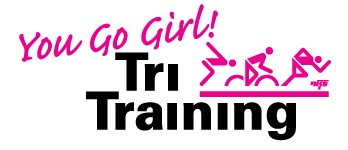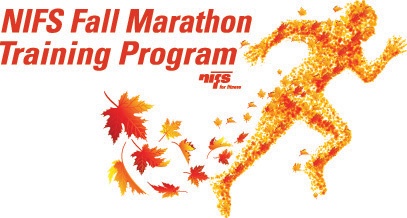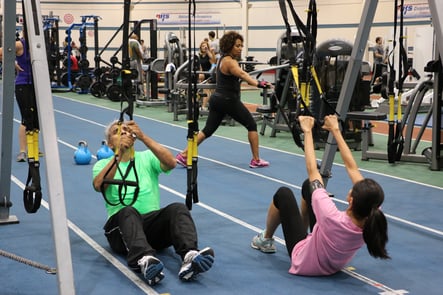 When most of us hear the personality type words introvert or extrovert, we think of them in terms of how people act when in a crowd or a room full of people. But have you ever thought about it in terms of your exercise environment? Are you the type of person who likes to have their headphones on and work out alone, or are you the more social type that gets more out of your workout when you are in a group or with your exercise partner? While both have their benefits, working out in a group is high on the list for many people today.
When most of us hear the personality type words introvert or extrovert, we think of them in terms of how people act when in a crowd or a room full of people. But have you ever thought about it in terms of your exercise environment? Are you the type of person who likes to have their headphones on and work out alone, or are you the more social type that gets more out of your workout when you are in a group or with your exercise partner? While both have their benefits, working out in a group is high on the list for many people today.
Working out with others provides a lot more than just someone to meet at the gym to check the workout off the list for the day. Even those who tend to be more introverted can learn that working out in a group setting can offer you something in the workout session you didn’t even know you were looking for!
Let’s take a look at some of the top reasons working out with others yields greater gains than being alone:
- Motivation: Working out within a group can provide you with the motivation you would not get while working out on your own. Everyone needs a little motivation sometimes to push themselves to the next level, and working out with others allows that to happen naturally! And there are psychological theories that when others are present, productivity goes up.
- Accountability: One of the main reasons that people join a group or find a workout partner is for accountability. While some are religious about getting their workout in, a majority of people need a reason to get themselves there. When you have a group that you feel is expecting you to come to class, you are much more apt to get there.
- Inspiration: Chances are that within a group, someone has a story that will inspire you to keep going. Take time when working out in the group setting to get to know the others, listen, and hear their stories. You never know what will inspire you to keep going.
- Group camaraderie: Not much needs to be said here; when the feeling of team is present, the connections are powerful!
- More challenging: If you ever were or are an athlete, you know firsthand that when others are around you tend to perform better. When I played soccer in high school and knew that a college coach was going to be at a game to recruit from the school I wanted to attend, I would bring my A+ game and then some. When working out around others, you naturally challenge yourself more than if you were alone.
- More enjoyable: Let’s face it, working out with others is so much more fun! When you are by yourself there most likely isn’t too much laughing, joking, and sharing in a challenging experience with others. And to top it off, when the gains are made, there is nothing better than getting to celebrate with someone else.
- Social interaction: And last but certainly not least, we all need a little social interaction in our lives! Even the most introverted person needs to have interaction with other people, and what better place to do it than working out, since a majority of your time is exercising and not talking!
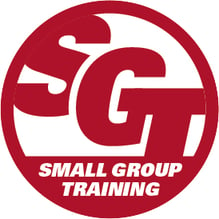 With all the benefits of working out in a group setting, it’s no wonder that so many people gravitate in that direction. If you are looking for a great way to break into the mold of group training, try Small Group Training at NIFS and the benefits of training in a group firsthand!
With all the benefits of working out in a group setting, it’s no wonder that so many people gravitate in that direction. If you are looking for a great way to break into the mold of group training, try Small Group Training at NIFS and the benefits of training in a group firsthand!
This blog was written by Amanda Bireline, MA, BS, Health Fitness Instructor. To find out more about the NIFS bloggers, click here.

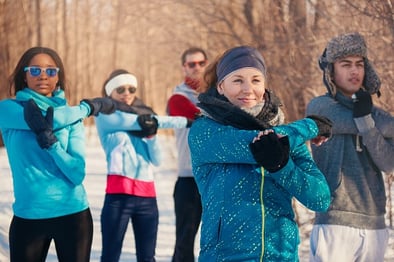 Even though I grew up in a northern snow belt along the Great Lakes, cold weather is not my thing. In fact, I really don’t like anything about it. And often along with the winter blues comes a decrease in health and fitness due to the lack of motivation. To counteract that feeling, let’s look at ten tips that can help you be healthier this winter.
Even though I grew up in a northern snow belt along the Great Lakes, cold weather is not my thing. In fact, I really don’t like anything about it. And often along with the winter blues comes a decrease in health and fitness due to the lack of motivation. To counteract that feeling, let’s look at ten tips that can help you be healthier this winter.

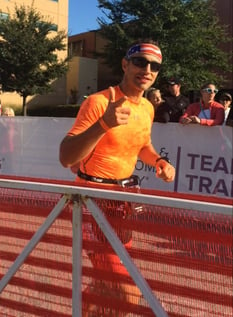 Longtime NIFS Mini-Marathon Prog
Longtime NIFS Mini-Marathon Prog
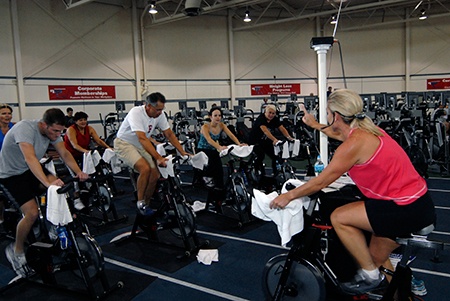 Are you one of those who either hate to run or find it is too hard on your body? You like to bike but right now it is way too cold to ride outside. Well, one of the greatest indoor group training classes that is offered is
Are you one of those who either hate to run or find it is too hard on your body? You like to bike but right now it is way too cold to ride outside. Well, one of the greatest indoor group training classes that is offered is  You hear it all the time: “Set your goals!” I can assure you that this will not be the last time you hear about
You hear it all the time: “Set your goals!” I can assure you that this will not be the last time you hear about 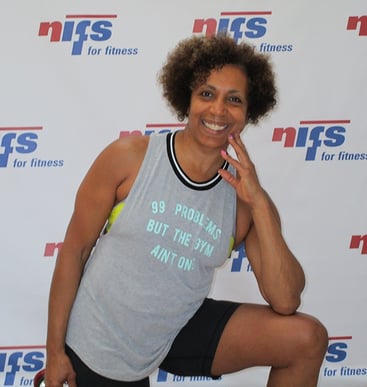 For the next installment of
For the next installment of 
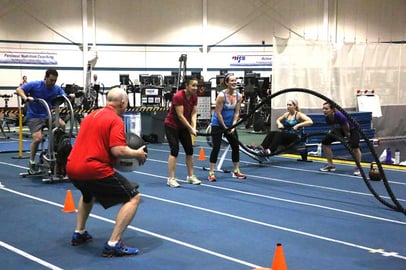 If you have ever participated in High Intensity Training (HIT), you will quickly discover what separates this style of workout from other popular styles you may know, like super sets or pyramid training. The main intention behind high intensity training workouts is that the workout will challenge your body to such a level of discomfort that its threshold or maximum capacity has no choice but to rise. Now don’t let the word “such a level of discomfort” scare you away; it’s the discomfort level that we all feel during exercise at some point, and of course you can push past it.
If you have ever participated in High Intensity Training (HIT), you will quickly discover what separates this style of workout from other popular styles you may know, like super sets or pyramid training. The main intention behind high intensity training workouts is that the workout will challenge your body to such a level of discomfort that its threshold or maximum capacity has no choice but to rise. Now don’t let the word “such a level of discomfort” scare you away; it’s the discomfort level that we all feel during exercise at some point, and of course you can push past it.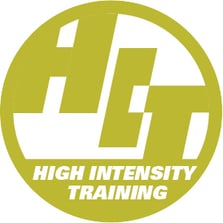
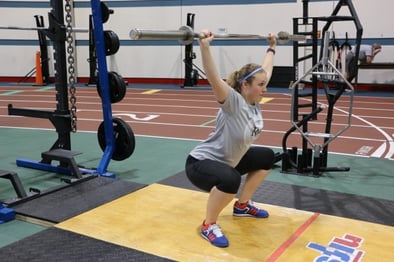 Improve performance of one or multiple lifts
Improve performance of one or multiple lifts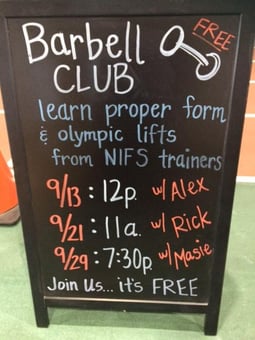 Clean (Hang or Power)
Clean (Hang or Power)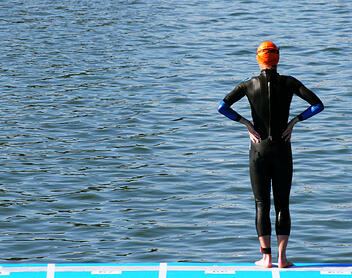 For many triathlon participants, the swim is the most difficult discipline. Open-water swimming is different than following the black line on the bottom of a pool. Here are some tips to help the swim portion of the race go more smoothly.
For many triathlon participants, the swim is the most difficult discipline. Open-water swimming is different than following the black line on the bottom of a pool. Here are some tips to help the swim portion of the race go more smoothly.